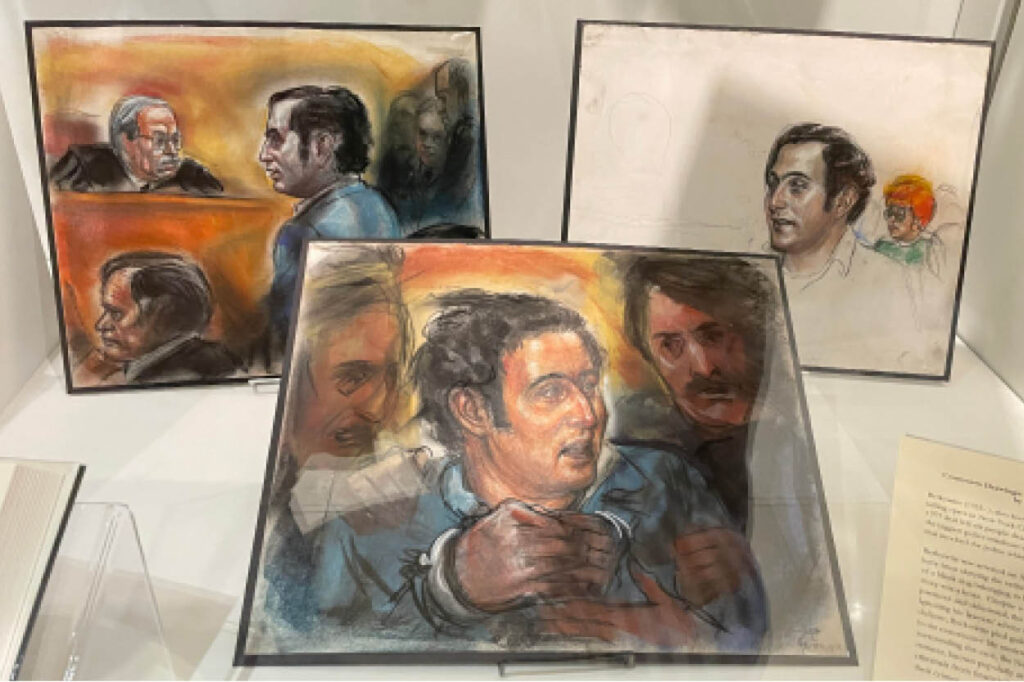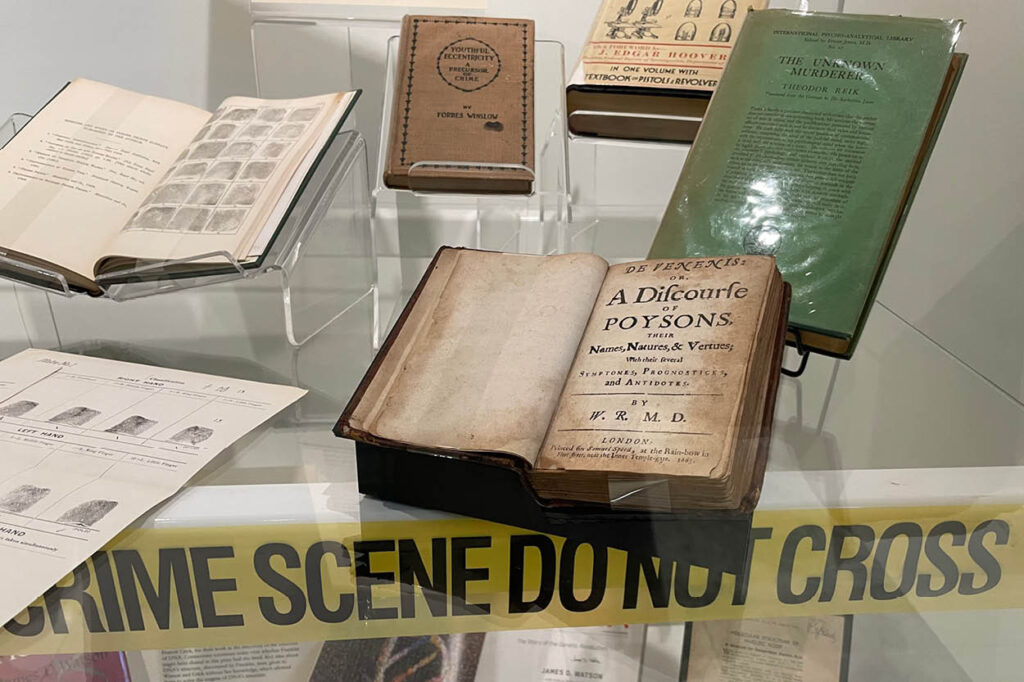The Pursuit of Justice: Evidence from our Special Collections

The path to justice can be dynamic, tumultuous, and, at times, elusive. Rare books and manuscripts from UT Libraries' Betsey B. Creekmore Special Collections and University Archives highlight some difficult chapters in our society's quest to dispense justice.
The materials, currently on display on the first floor of Hodges Library, recall several infamous crimes. There's a wanted poster for James Earl Ray, who assassinated Martin Luther King, Jr. in 1968. There's a handwritten letter from Byron de la Beckwith, who murdered civil rights activist Medgar Evers in 1963.
Some good guys are featured as well, such as Estes Kefauver, the US Senator from Tennessee who led a series of investigative hearings into organized crime in the 1950s.
Many of the materials in the display are from a collection of manuscripts and rare books donated to Special Collections by best-selling crime writer Patricia Cornwell. They include courtroom drawings from the trials of mass murderers Charles Manson (leader of the Manson Family cult) and David Berkowitz (known as the Son of Sam).

There are courtroom drawings from the 1976 trial of Patty Hearst. Hearst, the daughter of American publishing magnate William Randolph Hearst, was convicted of participating in a bank robbery carried out by an urban guerilla group called the Symbionese Liberation Army.
Rare books on view from the Patricia Cornwell Rare Book Collection include a number of early works on forensics, such as a 1663 manual on poisons and a contemporaneous account of some notorious 18th-century murderers.

Also from the Libraries’ rare book collection are crime novels coauthored by William Bass, former head of UT’s Forensic Anthropology Center as well as the Anthropology Research Facility — nicknamed “The Body Farm” — after one of Patricia Cornwell’s novels.
Materials on crime and justice will be on display in the Elaine Altman Evans Exhibit Area, first floor of the John C. Hodges Library, throughout the fall semester.